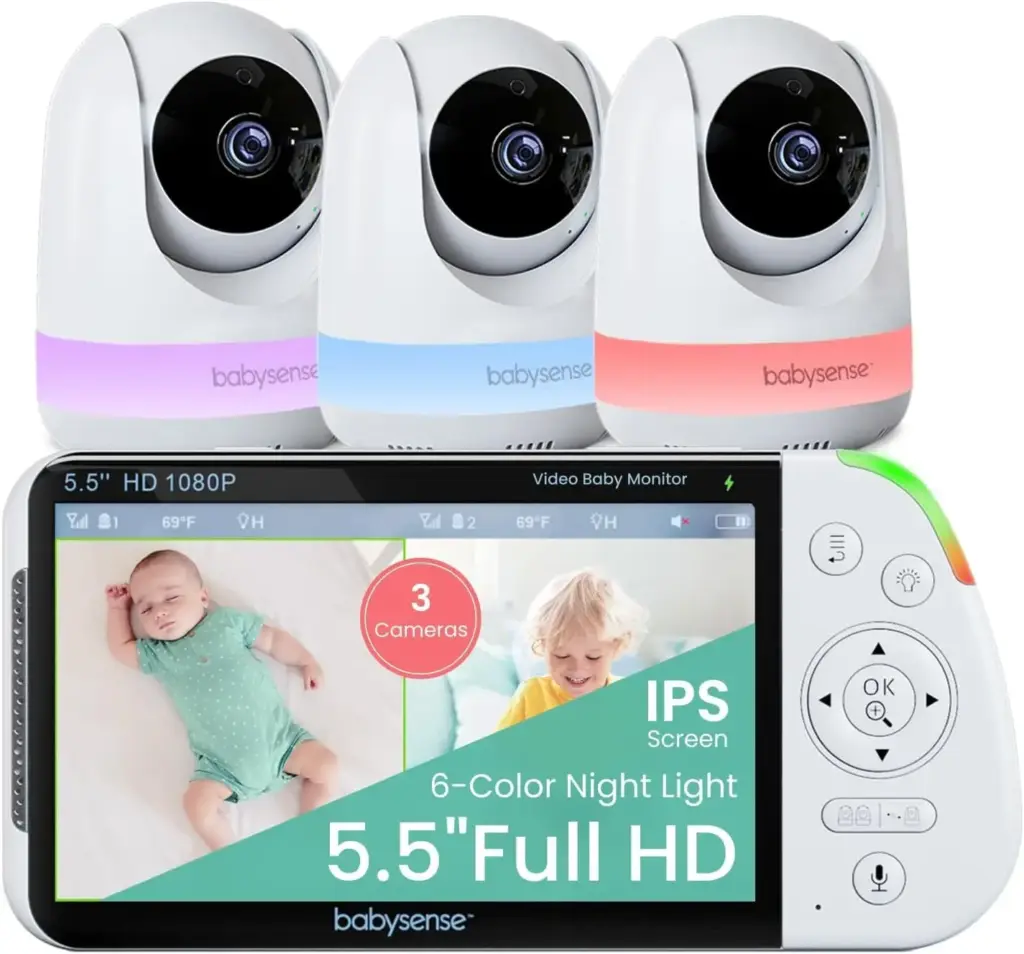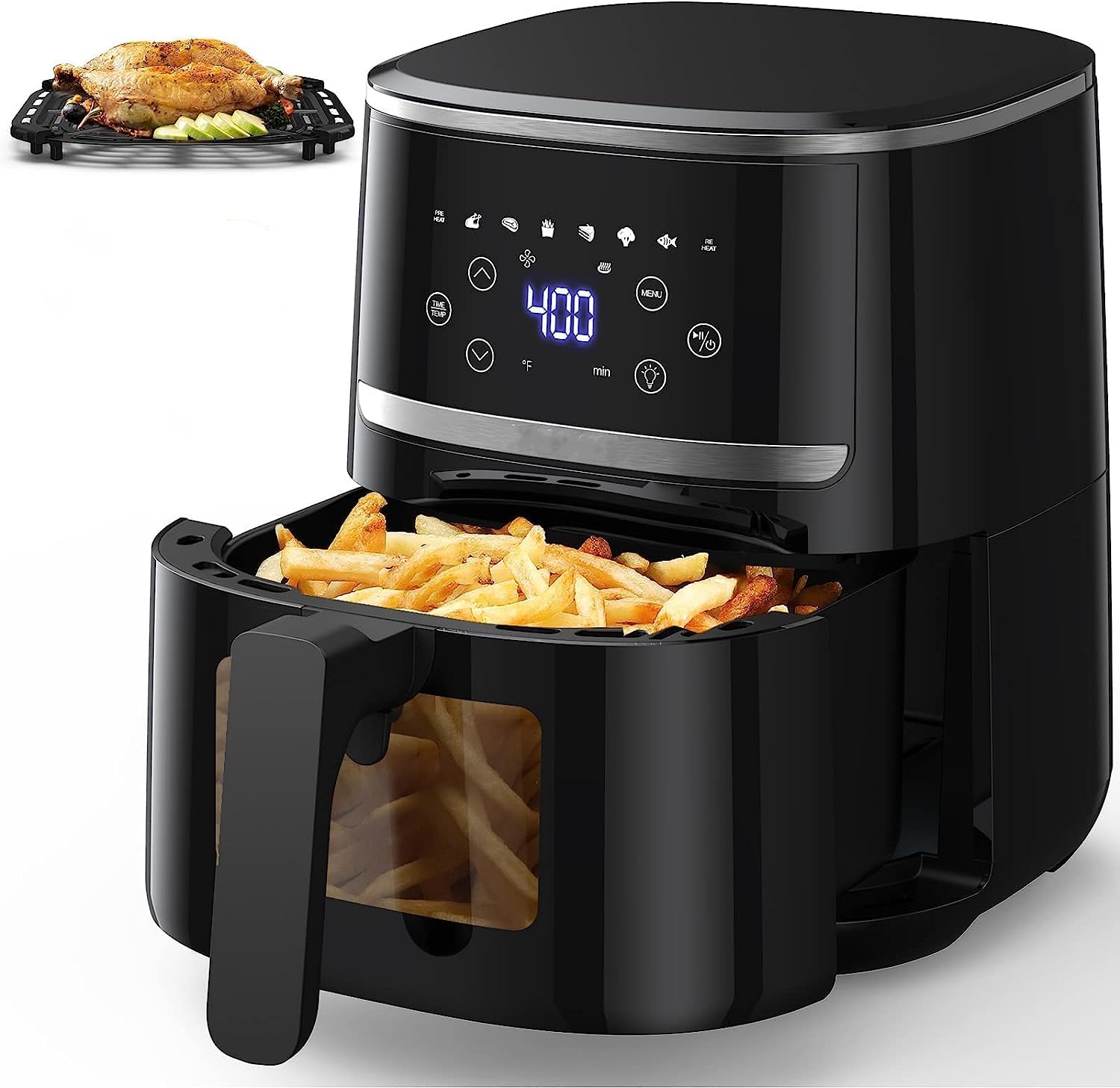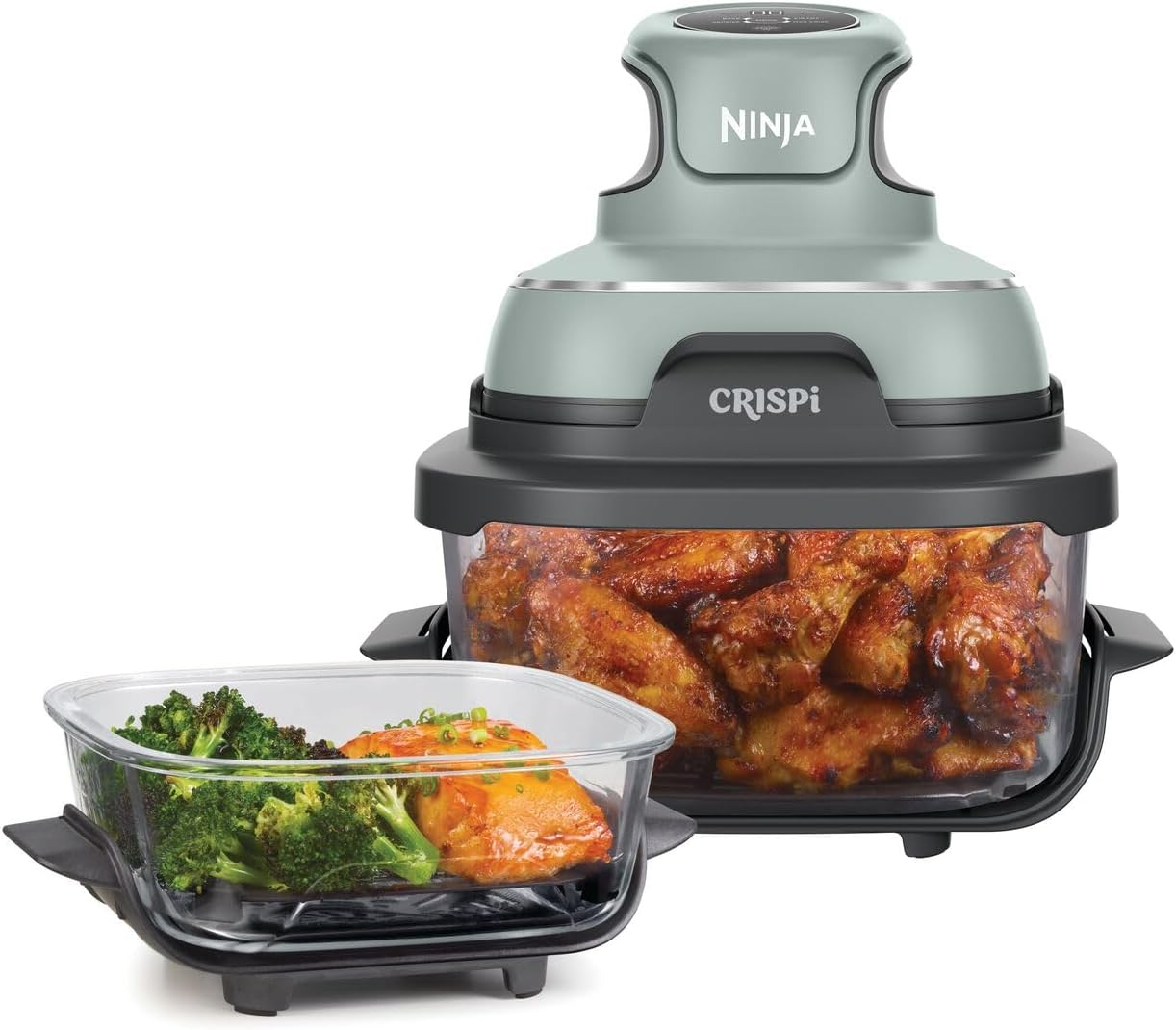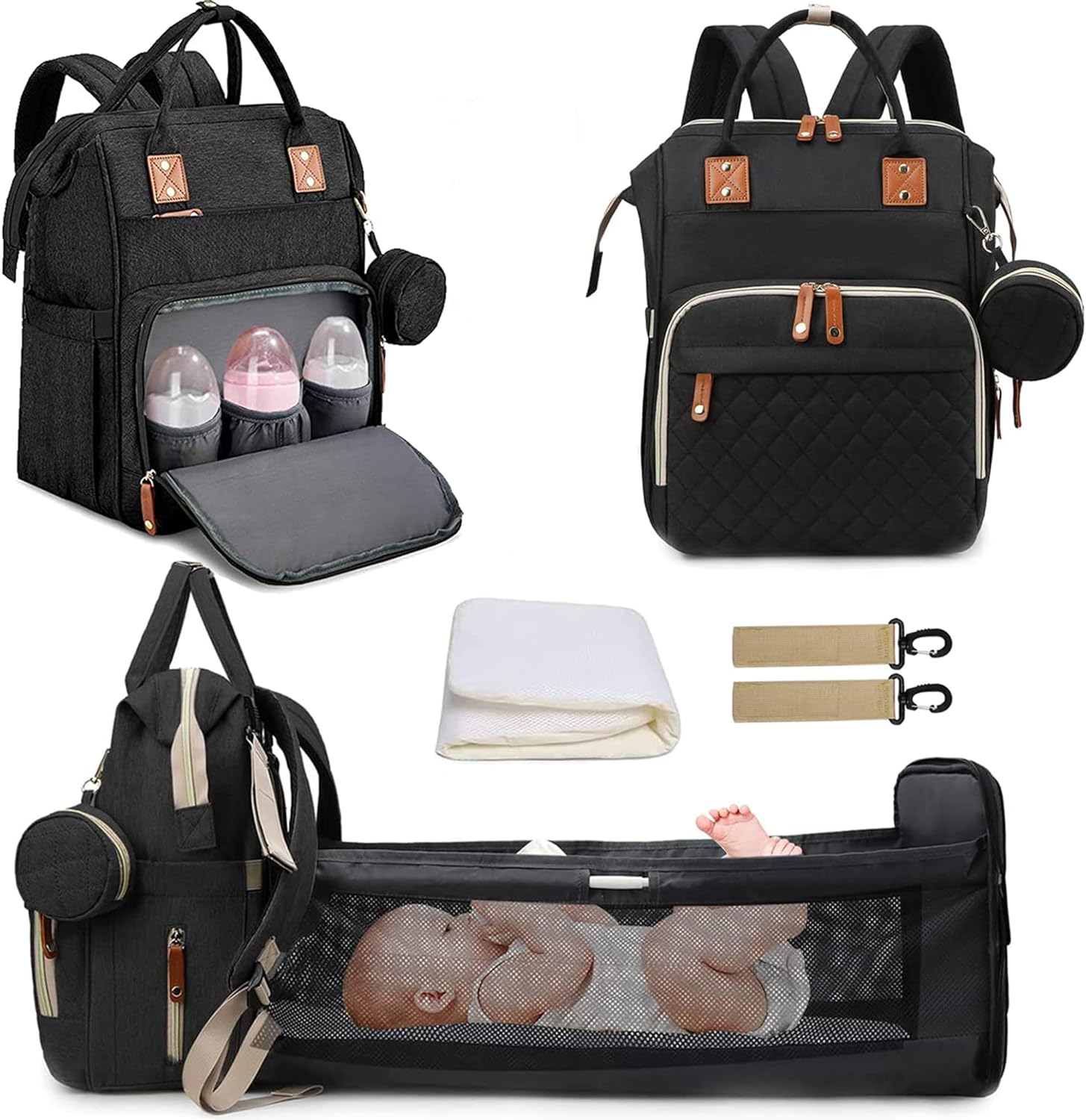Introduction
Welcoming a new baby brings incredible joy alongside natural concerns about keeping your little one safe throughout the night. When your baby sleeps in another room, a quality baby monitor becomes your trusted companion for peace of mind. The market offers everything from basic audio devices to sophisticated smart monitoring systems, making it challenging to determine which option provides the best value for your family.
Choosing the right baby monitor involves more than just comparing features and prices. You need a device that delivers reliable performance, maintains your family’s privacy, and fits comfortably within your budget. At 5050plus.com, we understand that budget-conscious parents want the best baby monitor reviews to help them make informed decisions without overspending on unnecessary features.
This comprehensive guide examines different monitor types, essential features, top-rated models, and security considerations to help you select the perfect monitoring solution. We’ll share expert insights, real parent experiences, and practical tips to ensure you find a monitor that offers both safety and savings for your growing family.
“The best baby monitor is one that gives parents peace of mind without creating additional stress through complicated setup or unreliable performance.” – Dr. Harvey Karp, Pediatrician and Child Development Expert
Key Takeaways
Different baby monitor types serve various family needs and budgets effectively
Essential features like video quality, range, and battery life significantly impact daily usability
Wi-Fi and non-Wi-Fi monitors each offer distinct advantages for home security and convenience
Top-rated models balance advanced features with reliable performance and reasonable pricing
Proper security measures protect your family’s privacy when using connected monitoring devices
What Types of Baby Monitors Are Available?

The baby monitor market has evolved significantly, offering parents multiple options to suit different preferences, home layouts, and security needs. Understanding these categories helps you narrow down choices before diving into specific product reviews and comparisons.
Audio-Only Monitors
Audio-only monitors represent the most straightforward approach to baby monitoring, functioning like a dedicated intercom system between your baby’s room and your location. These devices typically cost less than video alternatives and offer exceptional reliability with minimal setup requirements. Parents who live in smaller homes or apartments often find audio monitoring sufficient for their needs, especially when they primarily want notification of crying or restlessness. The simplicity of these monitors means fewer potential technical issues and longer battery life compared to more complex systems. Many audio monitors include features like two-way communication, multiple parent units, and sound-activated lights for visual alerts during noisy environments.
Video Monitors
Video monitors add visual monitoring capabilities to traditional audio functions, allowing parents to see their baby’s movements, sleeping position, and general well-being. Local video monitors operate on dedicated frequencies with included parent units, creating a closed monitoring system that doesn’t require internet connectivity. These systems typically offer plug-and-play setup and maintain consistent performance regardless of your home’s Wi-Fi strength.
“When evaluating baby monitors, parents should prioritize consistent performance over feature count. A simple monitor that works reliably every night is worth more than a complex system that fails when you need it most.” – What to Expect Editorial Team
Wi-Fi-enabled video monitors connect to your home network and stream footage directly to smartphones, tablets, or computers. This connectivity enables remote monitoring from anywhere with internet access, making them popular among working parents or those who travel frequently. Many Wi-Fi models include cloud storage options, smartphone alerts, and integration with smart home systems for enhanced functionality.
Movement and Health Monitors
Advanced monitoring systems track your baby’s movements, breathing patterns, and sometimes additional health metrics like heart rate and sleep quality. These monitors often come as wearable devices, smart mattress pads, or sensor-equipped bassinets that provide detailed analytics about your baby’s rest patterns. While these systems can offer additional reassurance, pediatric experts emphasize that no monitor can prevent SIDS or replace safe sleep practices recommended by medical professionals. Parents considering these options should view them as supplementary tools rather than primary safety devices, always maintaining proper sleep environments and following established guidelines for infant care.
“No consumer product, including baby monitors that claim to reduce the risk of SIDS, has been proven to actually do so. Safe sleep practices remain the most effective way to reduce SIDS risk.” – American Academy of Pediatrics
Essential Features to Consider in Baby Monitor Reviews
When evaluating baby monitor reviews, certain features consistently impact user satisfaction and long-term value. These characteristics determine whether a monitor will meet your family’s daily needs and provide reliable service over time.
Picture and Sound Quality

Video clarity makes the difference between useful monitoring and frustrating guesswork about your baby’s condition. Modern monitors should offer at least 720p resolution, with many premium models providing 1080p or even 2K quality for crystal-clear imagery. Night vision capabilities using infrared technology ensure you can monitor your baby clearly in complete darkness without disturbing their sleep with visible light.
Audio quality proves equally important across all monitor types, requiring clear sound transmission without static interference or background noise. The best monitors capture subtle sounds like breathing or soft movement while filtering out household noise that might cause false alerts. Two-way audio features allow parents to soothe their baby remotely through gentle speaking or singing, often preventing the need for physical intervention during minor sleep disruptions.
Digital signal processing in quality monitors reduces interference from other household electronics, baby monitors in neighboring homes, and wireless devices that might disrupt clear communication. Look for monitors with multiple channel options that automatically select the clearest available frequency for optimal performance.
Range and Connectivity
Effective monitoring range determines where you can use your monitor throughout your home and yard. Local video monitors advertise ranges up to 1,000 feet in open areas, but walls, floors, and large appliances significantly reduce actual coverage. Multi-story homes, thick walls, and metal construction materials can cut effective range by 50% or more from advertised specifications.
Wi-Fi monitors depend entirely on your home network’s strength and coverage area. Strong Wi-Fi signals enable monitoring from virtually anywhere, while weak connections cause video lag, audio delays, and frequent disconnections that compromise reliability. Consider your home’s Wi-Fi coverage patterns and potential dead zones when evaluating connected monitoring options.
Range indicators and signal strength displays help you identify optimal placement locations for both baby and parent units. Some monitors include range extenders or additional base stations to improve coverage in larger homes or challenging layouts.
Battery Life and Power Options
Battery performance affects your monitor’s usability, especially during nighttime monitoring when you might move between rooms or take the parent unit outside. Video monitors consume significantly more power than audio-only models, with continuous streaming potentially draining batteries within 4-6 hours of active use.
Many parents prefer monitors that can operate both on battery power and plugged into wall outlets, providing flexibility for different situations. Rechargeable batteries using standard USB charging cables offer convenience and cost savings compared to disposable battery systems. Low-battery alerts with sufficient warning time prevent unexpected shutdowns during important monitoring periods.
Power-saving features help extend battery life without compromising monitoring quality:
Screen sleep modes
Motion-activated recording
Adjustable brightness settings
Power management settings that automatically adjust performance
Some advanced monitors offer power management settings that automatically adjust performance based on usage patterns and remaining battery capacity.
Ease of Setup and Usability
User-friendly design becomes crucial when you’re managing setup during stressful periods or teaching other caregivers to use the system. Local monitors typically offer straightforward plug-and-play installation with automatic pairing between baby and parent units. Clear instruction manuals, intuitive button layouts, and logical menu systems reduce setup time and frustration.
Wi-Fi monitors require additional steps including app downloads, account creation, network configuration, and device pairing that can complicate initial setup. The best Wi-Fi models provide step-by-step guidance through smartphone apps with clear instructions and troubleshooting support for common connection issues.
Control accessibility matters during daily use, with easily reached buttons for volume, brightness, pan, tilt, and zoom functions. Large, clearly labeled controls help during low-light conditions when you need to adjust settings quietly. Menu systems should be intuitive enough for grandparents or babysitters to operate without extensive instruction.
Top Picks for Safe and Reliable Baby Monitors
Based on comprehensive testing, expert evaluations, and extensive parent feedback, several monitors consistently earn recognition for their reliability, safety features, and overall value. These recommendations span different price points and feature sets to accommodate various family needs and budgets.
|
Monitor |
Type |
Video Quality |
Key Features |
Price Range |
|---|---|---|---|---|
|
Nanit Pro Smart Baby Monitor |
Wi-Fi |
1080p HD |
Sleep tracking, smartphone app, encryption |
Premium |
|
Babysense MaxView Baby Monitor |
Non-Wi-Fi |
1080p |
Long battery life, temperature monitoring |
Mid-range |
|
Wyze Cam Pan v3 |
Wi-Fi |
1080p |
Pan/tilt/zoom, color night vision |
Budget |
Best Overall Wi-Fi Baby Monitor: Nanit Pro Smart Baby Monitor

The Nanit Pro has earned widespread acclaim from both tech experts and parents for its comprehensive feature set and reliable performance. This monitor streams 1080p HD video with excellent night vision capabilities, providing clear imagery in all lighting conditions. The accompanying smartphone app offers intuitive controls and responsive performance that makes remote monitoring simple and efficient.
Security features include robust encryption protocols and two-factor authentication that protect your family’s privacy from unauthorized access. The Nanit Pro’s sleep tracking analytics provide valuable insights into your baby’s rest patterns, helping you optimize sleep schedules and identify potential issues early. While some advanced features require subscription services after an initial free period, many parents find the basic monitoring capabilities sufficient for their needs.
The flexible mounting system accommodates various nursery layouts and grows with your child’s changing needs. Background audio functionality allows you to monitor while using other smartphone apps, maintaining awareness without constant screen attention. At 5050plus.com, we frequently feature deals on Nanit Pro systems that make this premium monitor more accessible to budget-conscious families.
Best Overall Non-Wi-Fi Baby Monitor: Babysense MaxView Baby Monitor
Parents seeking privacy and simplicity often prefer the Babysense MaxView for its closed-system design that eliminates internet-related security concerns. This monitor delivers exceptional 1080p video quality through a dedicated parent unit with impressive battery life and extended range capabilities. The absence of Wi-Fi connectivity means consistent performance regardless of your home network’s reliability or speed.

The MaxView includes practical extras like temperature monitoring, night light functionality, and responsive pan-tilt controls that provide complete nursery coverage. Its large, clear display screen and intuitive controls make operation simple for all caregivers, from tech-savvy parents to less experienced grandparents or babysitters.
Two-way audio with clear sound quality enables remote comfort for fussy babies, while multiple mounting options accommodate different nursery configurations. The monitor’s focus on essential features without unnecessary complexity appeals to parents who want reliable monitoring without ongoing subscription costs or privacy concerns.
Best Budget-Friendly Video Monitor: Wyze Cam Pan v3
Budget-conscious parents often discover that the Wyze Cam Pan v3 provides remarkable value for basic video monitoring needs. Originally designed as a home security camera, this device has become popular among parents seeking affordable monitoring solutions without sacrificing essential features. At under $40, it offers 1080p video quality with pan, tilt, and zoom capabilities that rival much more expensive dedicated baby monitors.
The smartphone app provides remote access with color night vision that maintains clear imagery in low-light conditions. While it lacks baby-specific features like built-in lullabies or specialized sleep tracking, its core monitoring functions perform reliably for families focused on basic visual and audio monitoring.
Setup requires careful attention to security settings and privacy configurations, but the included instructions guide users through proper installation. The Wyze Cam Pan v3 represents an excellent entry point for parents exploring video monitoring without committing to higher-priced alternatives. 5050plus.com regularly highlights deals on affordable monitoring solutions that help families stay within budget while maintaining safety priorities.
Addressing Security and Privacy Concerns with Baby Monitors

Security considerations have become increasingly important as more baby monitors connect to home networks and the internet. Understanding potential risks and implementing proper safeguards helps protect your family’s privacy while enjoying the benefits of modern monitoring technology.
Understanding the Risks
Connected baby monitors transmit data over internet networks, creating potential entry points for unauthorized access if security measures are insufficient. Weak passwords, outdated firmware, and inadequate encryption protocols can leave monitoring systems vulnerable to intrusion. Beyond privacy concerns, compromised monitors might provide information about family routines, home layouts, and daily schedules that could be misused.
Default passwords and factory settings often provide minimal security protection, requiring users to actively implement stronger safeguards. Some lower-cost monitors may lack advanced security features entirely, prioritizing affordability over comprehensive protection. Research indicates that monitors from reputable manufacturers with established security protocols face significantly lower risk of unauthorized access compared to budget alternatives with minimal protection.
How to Enhance Security
Selecting monitors with built-in security features provides the foundation for safe usage. Look for devices that offer WPA2 or WPA3 encryption, automatic firmware updates, and two-factor authentication for account access. These features create multiple layers of protection that significantly reduce vulnerability to common hacking attempts.
Your home network’s security directly impacts monitor safety, making router configuration equally important. Use unique passwords for both your Wi-Fi network and monitor accounts, avoiding easily guessed combinations or default settings. Regular firmware updates for both monitors and routers patch known security vulnerabilities and maintain protection against emerging threats.
Secure network segmentation, where possible, can isolate baby monitors from other connected devices and limit potential access points. Some advanced routers offer guest network features that can dedicate bandwidth to monitoring devices while protecting primary network access.
Best Practices for Safe Usage
Implementing smart usage habits reinforces technical security measures and reduces risk exposure:
Select monitors with built-in security features (WPA2/WPA3 encryption, automatic firmware updates, two-factor authentication)
Configure your home network with strong security settings
Use unique passwords for both Wi-Fi network and monitor accounts
Keep firmware updated for both monitors and routers
Consider secure network segmentation when possible
Additional best practices include:
Change all default passwords immediately upon setup
Disable unnecessary features like remote access if not needed
Review account access logs regularly when available
Monitor for unusual activity
Keep monitoring apps updated on devices
Consider using dedicated devices for baby monitoring
Consider using dedicated devices for baby monitoring rather than your primary smartphone or tablet. This approach minimizes potential data exposure from other apps while providing consistent monitoring performance without interruptions from calls, messages, or other notifications.
How Baby Monitors Are Tested by Experts
Professional testing organizations employ standardized methodologies to evaluate baby monitor performance across multiple criteria. These comprehensive assessments provide objective data that helps parents compare different models and make informed purchasing decisions based on real-world performance rather than marketing claims.
Comprehensive Testing Environments
Expert testing occurs in controlled environments that simulate typical home conditions, including various room sizes, wall materials, and potential interference sources. Testers evaluate monitors in single-story and multi-level homes to assess range limitations and signal strength under realistic conditions. Different lighting scenarios, from bright daylight to complete darkness, test video quality and night vision capabilities across the full spectrum of monitoring situations.
Battery life testing involves continuous operation under standard usage patterns to determine actual performance versus manufacturer specifications. Testers also evaluate how quickly batteries drain under different usage intensities, including continuous video streaming, audio-only monitoring, and standby modes with motion activation.
Environmental factors like temperature, humidity, and electromagnetic interference from common household devices are incorporated into testing protocols. These conditions help identify monitors that maintain consistent performance despite challenging operating environments that families might encounter in daily use.
“The most reliable baby monitors are those that consistently perform their core functions well rather than those packed with features that may fail. We test for reliability over extended periods because parents need monitors that work when it matters most.” – Consumer Reports Electronics Testing Team
Evaluating Key Performance Indicators
Testing protocols examine multiple performance categories using both objective measurements and subjective evaluations. Video and audio quality receive quantitative analysis through resolution testing, color accuracy, night vision clarity, and sound reproduction fidelity. Range testing measures actual coverage distances in various home configurations compared to advertised specifications.
User interface evaluation considers setup complexity, menu navigation, control responsiveness, and overall ease of use for caregivers with different technical skill levels. Security testing examines encryption strength, authentication protocols, and vulnerability assessments that determine each monitor’s resistance to unauthorized access attempts.
Reliability testing involves extended operation periods to identify potential failure points, connection stability issues, and long-term performance degradation. These comprehensive evaluations provide confidence ratings that help parents understand which monitors will deliver consistent service over extended periods of regular use.
Smart Safety Essentials for New Parents
A reliable baby monitor offers priceless peace of mind, especially when paired with other must-haves like the top stroller picks for newborns and a thoughtfully packed diaper bag checklist for new moms. As you prep for baby’s arrival, don’t miss these Amazon baby essentials under $25 or our reader-favorite list of things I wish I knew about newborns – because feeling prepared starts with the right gear and guidance.
Balancing Features and Simplicity
Many parents express preference for monitors that prioritize reliable core functions over extensive feature lists that may complicate daily use. Reviews frequently praise models that provide clear video, crisp audio, and consistent connectivity without requiring complex setup procedures or ongoing technical maintenance. Parents with multiple children often emphasize the importance of quick, intuitive operation that doesn’t require consulting instruction manuals during stressful nighttime situations.
Advanced features like sleep analytics and smartphone integration receive mixed feedback, with some parents finding them valuable for understanding sleep patterns while others view them as unnecessary complications. The most consistently positive reviews focus on monitors that excel at basic monitoring functions while offering optional advanced features that can be easily ignored if not needed.
Grandparents and other caregivers often influence monitor selection, with many parents choosing simpler systems that elderly relatives can operate confidently. This consideration leads many families toward local monitors with dedicated parent units rather than smartphone-dependent systems that might confuse less tech-savvy users.
Reliability and Connectivity in Focus
Consistent connectivity emerges as the most critical factor in parent satisfaction across all monitor types. Reviews repeatedly emphasize frustration with monitors that frequently disconnect, experience significant lag, or fail to reconnect automatically after brief interruptions. Parents report that even feature-rich monitors become unusable if they can’t maintain stable connections during crucial monitoring periods.
Wi-Fi monitor reviews often correlate satisfaction with home network quality, highlighting the importance of strong, consistent internet connectivity for optimal performance. Parents in homes with Wi-Fi dead zones or unreliable internet service frequently prefer local monitors that don’t depend on network connectivity for basic operation.
Range limitations receive frequent mention in reviews, with many parents discovering that actual coverage areas fall short of advertised specifications in their specific home environments. The most helpful reviews include specific details about home construction, layout challenges, and actual usage distances that help other parents set realistic expectations for similar situations.
Conclusion
Selecting the right baby monitor requires balancing safety, reliability, features, and budget to find a solution that truly serves your family’s needs. The best monitors provide consistent performance, clear audio and video quality, and appropriate security measures that protect your privacy while delivering peace of mind. Whether you choose a simple audio monitor, a local video system, or an advanced Wi-Fi model with smart features, the most important factor is reliable operation when you need it most.
Expert reviews and parent experiences both emphasize that successful monitoring depends more on consistent basic performance than on impressive feature lists. Focus on monitors that excel at core functions like clear communication, dependable connectivity, and user-friendly operation. Remember that the perfect monitor is one that fits seamlessly into your daily routine while providing the reassurance you need to rest comfortably knowing your baby is safe and sound.
FAQs
How far away can a baby monitor work?
Monitor range varies significantly based on type and environmental factors affecting signal transmission. Local video monitors typically advertise ranges up to 1,000 feet in optimal conditions, but walls, floors, and household electronics often reduce effective coverage to 300-500 feet in typical homes. Wi-Fi monitors theoretically offer unlimited range but depend entirely on your home network’s coverage and internet connectivity strength throughout your monitoring areas.
Are smart baby monitors susceptible to hacking?
Smart baby monitors can face security risks like any internet-connected device, but proper precautions significantly minimize these threats. Monitors with strong encryption, two-factor authentication, and regular firmware updates from reputable manufacturers offer robust protection against unauthorized access. Using unique passwords, maintaining updated software, and choosing monitors from established brands with proven security records helps ensure your family’s privacy remains protected during monitoring activities.
Can a baby monitor prevent SIDS?
No baby monitor can prevent SIDS, and parents should never rely on any monitoring device as a SIDS prevention tool. While some monitors track movement or breathing patterns, they are not medical devices and cannot guarantee detection of all dangerous situations. Always follow safe sleep guidelines recommended by pediatric organizations, including placing babies on their backs to sleep, using firm mattresses, and maintaining appropriate room temperatures regardless of monitoring technology.
What is the difference between a Wi-Fi and a non-Wi-Fi baby monitor?
Non-Wi-Fi baby monitors operate on dedicated frequencies with included parent units, creating closed monitoring systems that don’t require internet connectivity for basic operation. These monitors offer consistent performance regardless of home network conditions but limit monitoring to areas within their specified range. Wi-Fi baby monitors connect to your home network and stream content to smartphones or tablets, enabling remote monitoring from anywhere with internet access but requiring stable network connectivity for reliable operation.






